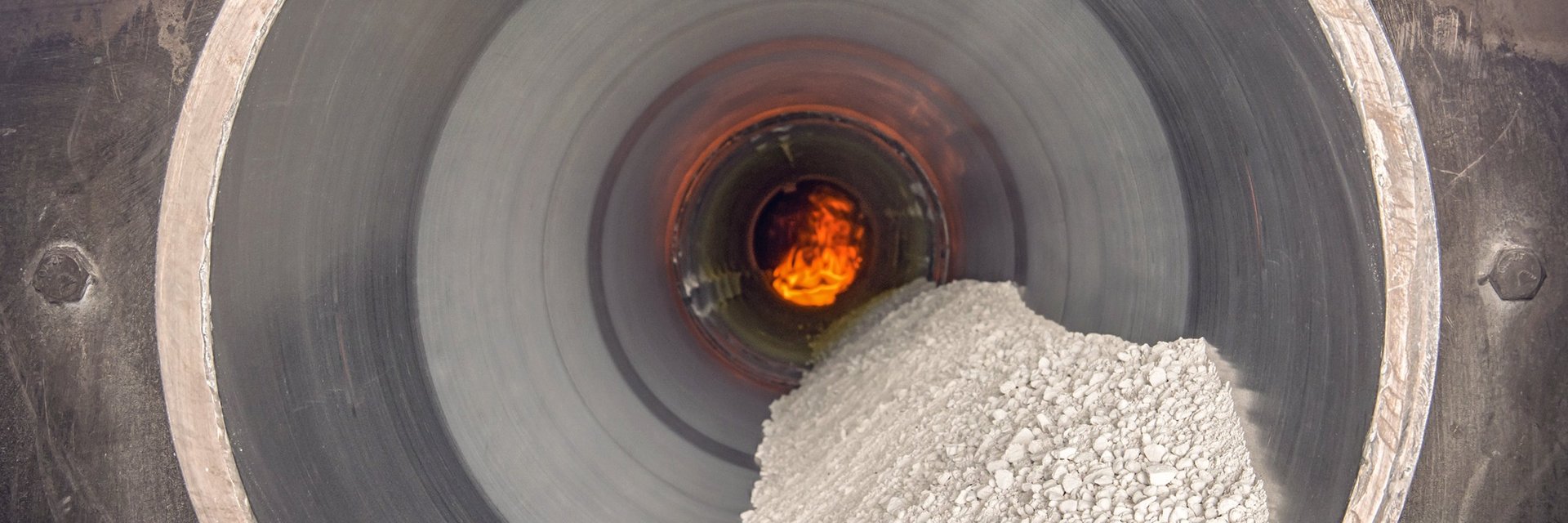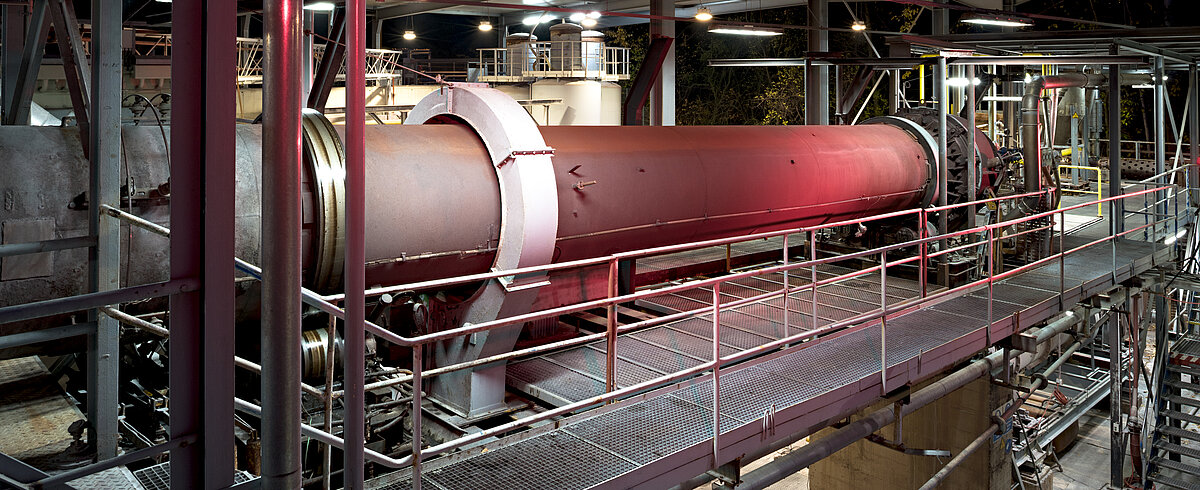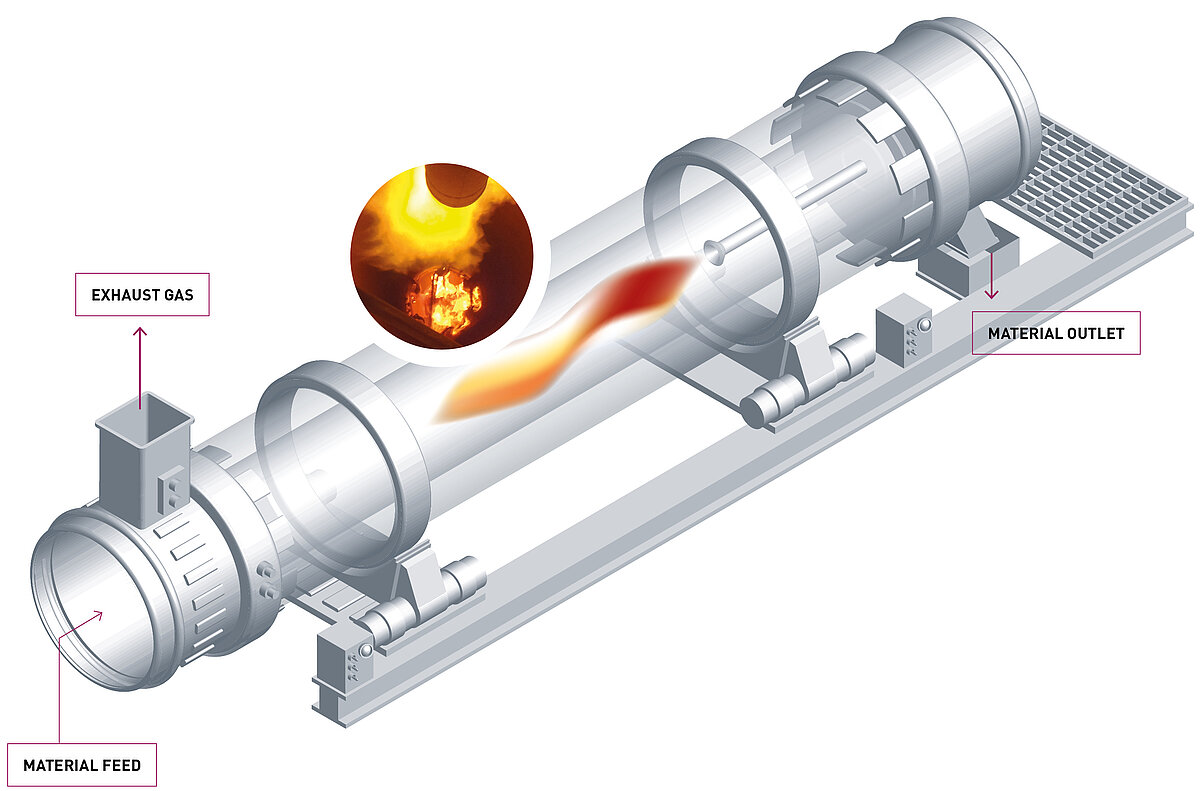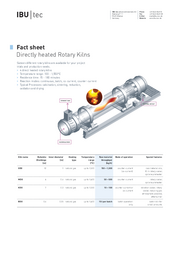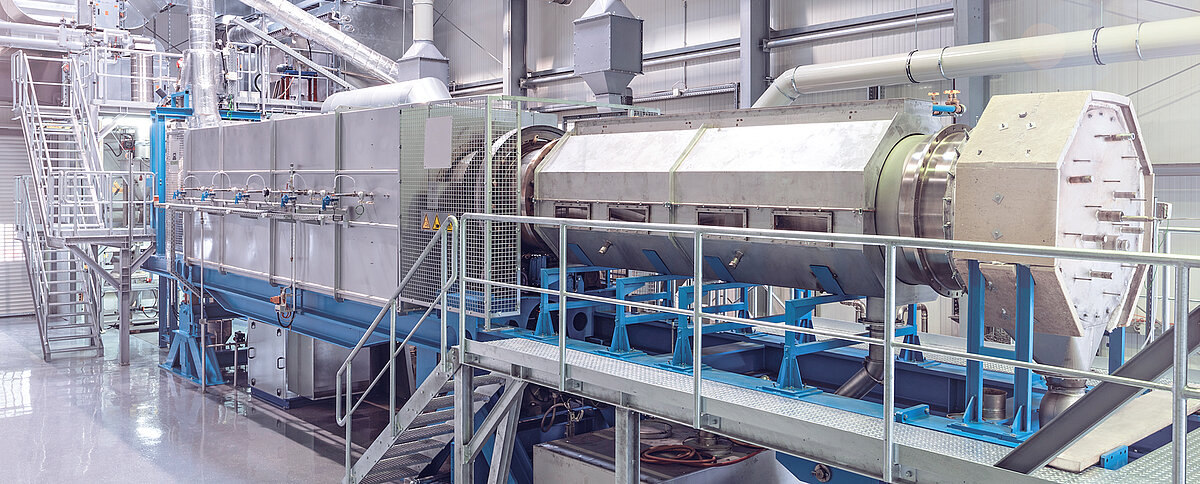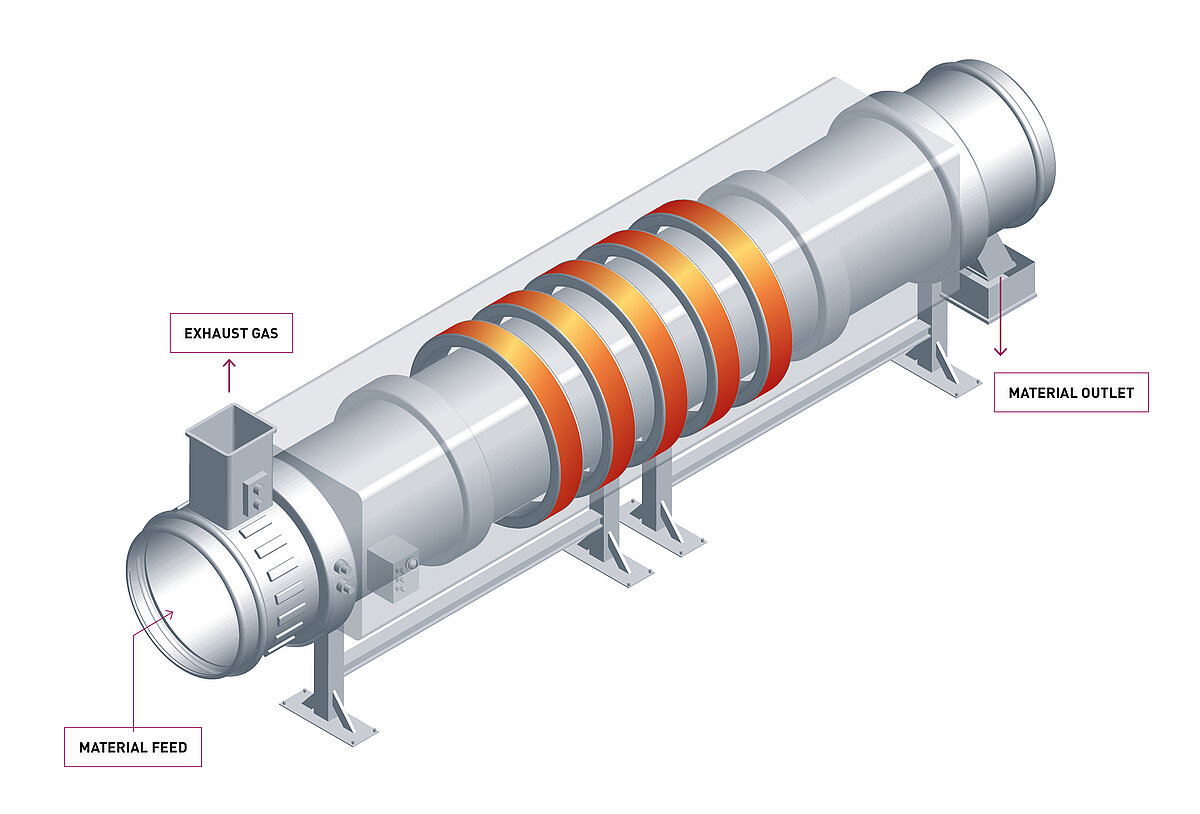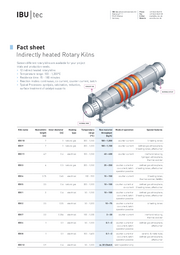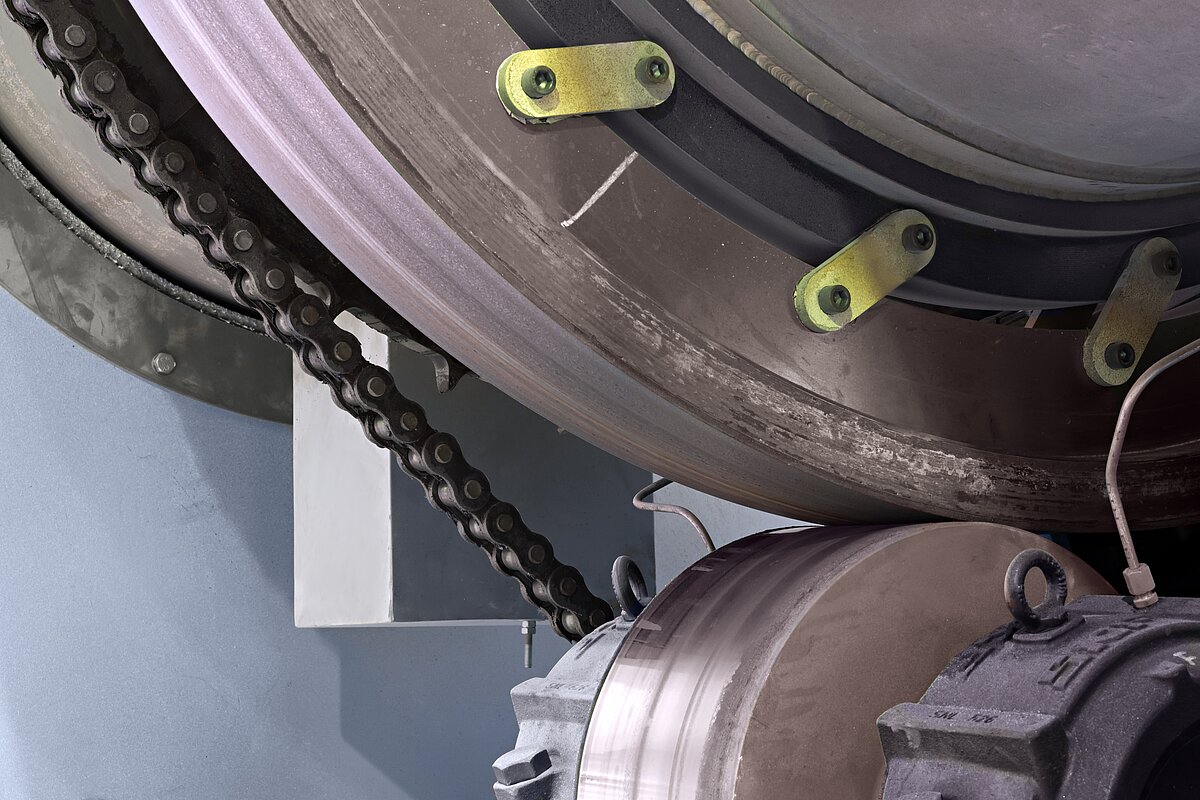How Rotary Kilns Work
Rotary kilns (sometimes called calciners or rotary furnaces) are used for thermal treatment processes such as calcination, sintering, pyrolysis and firing, as well as for oxidation and reduction. These treatments can be applied to powders, granulates, suspensions and green bodies. A rotary kiln consists of a cylindrical, rotating body mounted between stationary material feed and outlet housings. The constant turning of the kiln body mixes the material, ensuring that it is processed homogeneously. Rotary kilns are heated either directly (inside the kiln chamber) or indirectly (from outside), depending upon the requirements of the application.
Direct Fired Rotary Kiln
In a direct-fired rotary kiln, the burner is situated inside the kiln body, that is, inside the reaction chamber. The material is heated directly by the burner flame and the stream of hot gas produced by the burner. These kilns are usually lined with refractory (heat-resistant) material so that they can be operated at higher temperatures than kilns with plain metal tubes. Directly fired kilns are highly robust and easily scalable and can be used to achieve high throughput rates with relatively low production costs.
Facts & Data
- 4 direct heated rotary kilns
- Temperature range: 100 – 1,550°C
- Residence time: 15 – 180 minutes
- Reaction modes: continuous, batch, co-current, counter-current
- Typical Processes: calcination , sintering , reduction , oxidation and drying
- Rotary Kiln
- Characteristics & Capacities
Kiln
nameHeated
kiln
length
[m]Inner diameter
[m]Temperature
range
[°C]Raw material
throughput
[kg/h]Mode of operation
Special features
Heating
typeGDO
12
1
up to 1,500
150 – 1,500
counter-current (co-current)
raw material silo, 10 m rotary cooler, cyclone preheater
natural gas
MDO
4
0.6
up to 1,250
50 – 500
counter-current
rotary cooler, cyclone preheater
natural gas
KDO
7
0.3
up to 1,550
10 – 100
counter-current or co-current
vibration cooler, rotary cooler, reducing gas atmosphere possible, afterburner
natural gas
BDO
0.6
0.35
up to 1,000
15 l per batch
batch operation only
batch kiln for small quantities
natural gas
- Downloads
Indirect Fired Rotary Kilns
In contrast to directly fired kilns, indirect fired rotary kilns (also called rotary calciners) are equipped with natural gas burners or electric heating elements located outside the reaction chamber, so that the heat is transferred to the interior through the kiln shell. This arrangement makes it easy to operate the kiln with a controlled gas atmosphere in the reaction chamber (e.g. inert or reducing). Because combustion gases are kept out of the reaction chamber, the gas volume flow in an indirectly fired kiln is generally lower than in directly fired kilns. This means the indirect rotary kilns are excellent for treatment of very fine powders. They are also easier to clean, so that cross-contamination of materials can be more effectively prevented.
Facts & Data
- 12 indirect heated rotary kilns
- Temperature range: 100 – 1,400°C
- Residence time: 15 – 180 minutes
- Reaction modes: continuous, co-current, counter-current, batch
- Typical Processes: pyrolysis, calcination, reduction and surface treatment of catalyst supports
- Rotary Kiln
- Characteristics & Capacities
Kiln
nameHeated
kiln
length
[m]Inner diameter
[m]Temperature
range
[°C]Raw material
throughput
[kg/h]Mode of operation
Special features
Heating
typeIDO 10
7
1
300 - 1,150
100 - 1,000
counter-current
5 heating zones
natural gas
IDO 9
7
1
300 - 1,100
100 - 1,000
counter-current
defined gas atmosphere,
5 heating zones, thermal oxidizernatural gas
IDO 11 4.7 0.6 100 – 1,150 40 – 400 counter-current Inert and reducing, hydrogen-atmosphere,
thermal oxidizerelectrical
IDO 3
4
0.5
300 - 1,150
25 - 250
counter-current or
co-current, batch operation possibledefined gas atmosphere,
6 heating zones, thermal oxidizernatural gas
IDO 6 3.75 0.45 100 – 900 15 – 150 counter-current defined gas atmosphere,
3 heating zones, thermal oxidizer, DeNOxelectrical
IDO 5
3
0.4
300 - 1,150
10 - 100
counter-current or
co-currentdefined gas atmosphere,
3 heating zones, thermal oxidizerelectrical*
IDO 1
3
0.4
50 - 1,150
10 - 100
counter-current or
co-current, batch operation possibledefined gas atmosphere,
3 heating zones, thermal oxidizerelectrical
IDO 2
3
0.4
50 - 1,150
10 - 100
counter-current or
co-current, batch operation possibledefined gas atmosphere, 4 heating zones
electrical
IDO 7 2.3 0.254 100 – 1,000 3 – 30 counter-current or
co-currentInert and reducing,
thermal oxidizerelectrical
IDO 4
1
0.1
50 - 1,100
0.1 - 2
counter-current or
co-current, batch operation possibledefined gas atmosphere, thermal oxidizer
electrical
IDO 8
1
0.1
100 - 1,400
0.1 - 2
counter-current or
co-current, batch operation possibleceramic & metal tube, defined gas atmosphere, thermal oxidizer
electrical
IDO 12 0.9 0.4 50 - 1,100 ca. 30 l / batch batch operation only electrical
LBO 0.5 0.1 200 - 1,100
< 0,5 l / Batch batch operation only defined gas atmosphere electrical *in construction
- Downloads

